Researchers have already retrieved part of the mammoth's pelt and are hoping to find bits of preserved brain in its skull.
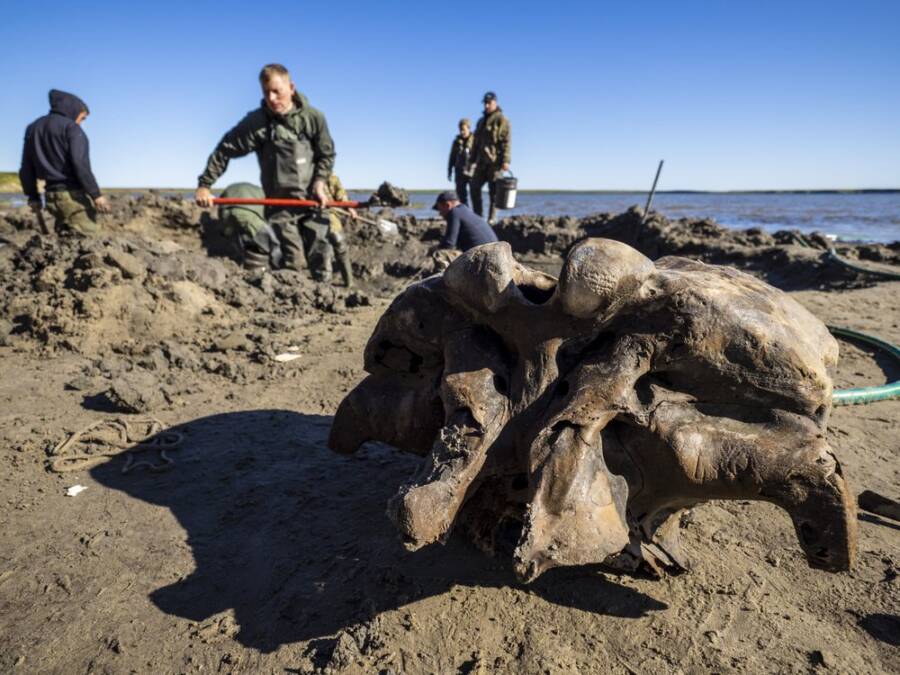
Artem Cheremisov/Gov. of Yamalo-Nenets of Russia Press Office via APThis is just the latest discovery to come out of the Siberian territory.
The Siberian landscape is known to be a rich resource for prehistoric fossils and just recently a group of reindeer shepherds made a stunning discovery: the well-preserved skeleton of a woolly mammoth.
The carcass was so intact, in fact, that it still had some of its pelt and ligaments attached to it. Researchers are hopeful that they may even find bits of its brain still in its skull.
According to the Associated Press, local reindeer herders stumbled upon the specimen in the shallow end of the Pechevalavato Lake located in the Yamalo-Nenets autonomous region.
The remains included a skull, several ribs, the lower jaw, and a foot fragment with sinews still intact.
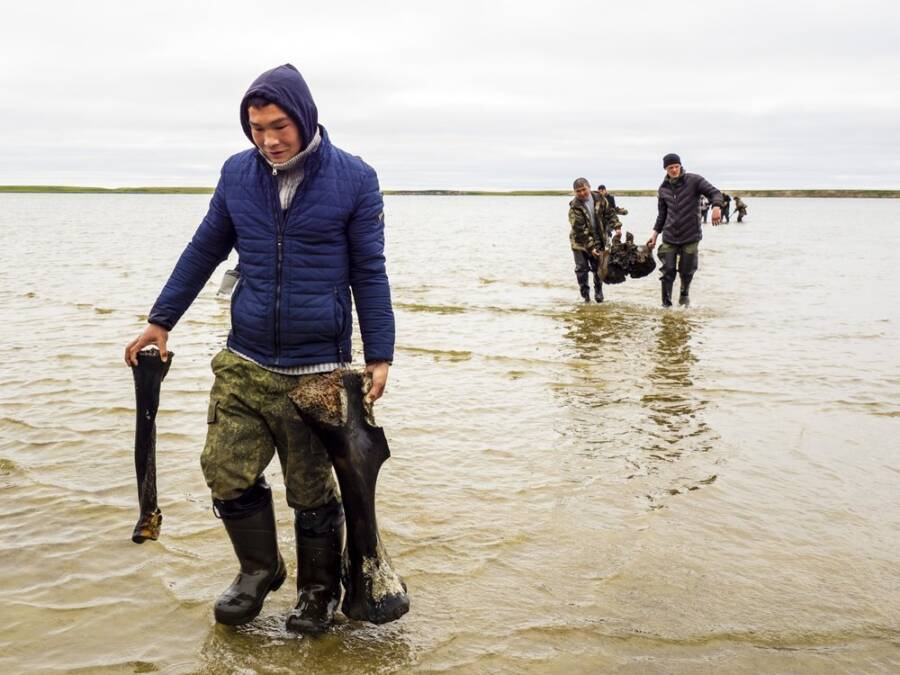
Artem Cheremisov/Gov. of Yamalo-Nenets of Russia Press Office via APScientists have yet to analyze the fossils, but they believe them to be at least 10,000 years old.
Locals quickly alerted researchers, who have since been working together with residents to uncover the rest of the remains likely submerged under the lake’s surface. But it’s also likely that the endeavor will take a considerable amount of time to complete.
Researchers are optimistic, however, as Dmitry Frolov, director of the Arctic Research Center told The Siberian Times, “The whole skeleton is there.”
He added that judging by the size of the fossils, this mammoth was likely young, but only further analysis will reveal just how old it really was.
Woolly mammoths roamed our planet during the Pleistocene era, which lasted somewhere between 2,580,000 to 11,700 years ago. According to scientists, mammoth populations spread across the globe, but most of their fossils in recent years have been uncovered in Siberia and Mexico.
Woolly mammoths in Russia are believed to have largely disappeared about 15,000 years ago, while another population on St. Paul Island is believed to have vanished only 4,300 years ago.
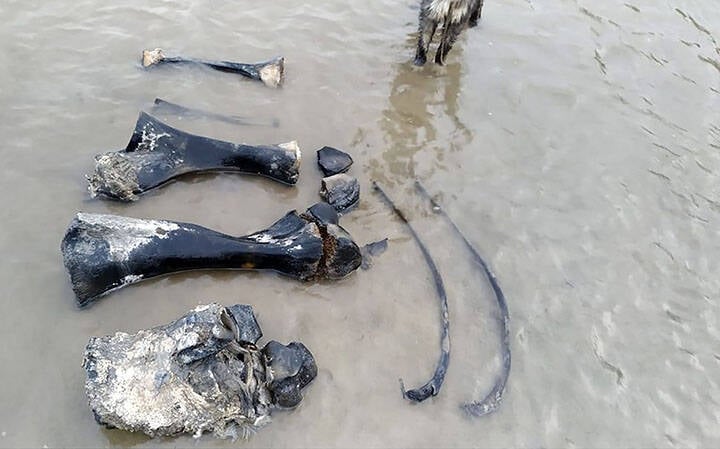
Stanislav Vanuit/TwitterThe bones of what is believed to be a teenage woolly mammoth with soft tissues intact found on Yamal peninsula.
According to Yevgeniya Khozyainova, a researcher from the Shemanovsky Institute in Salekhard, finding the complete skeleton of a mammoth is quite rare. However, several other well-preserved mammoth carcasses have been uncovered in the permafrost of northern Siberia recently as a heat wave which has been ripping through the territory over the summer thaws the thick ice. Archaeologists believe this phenomenon will only continue to reveal more prehistoric specimens.
A similar discovery was made on the other side of the world in May 2020, when the remains of 60 individual mammoths were retrieved from a construction site right outside of Mexico City, Mexico.
Some 15,000 years ago that site had been the location of an ancient lake known as Xaltocan, where giant mammoths and other beasts of the time would have congregated.
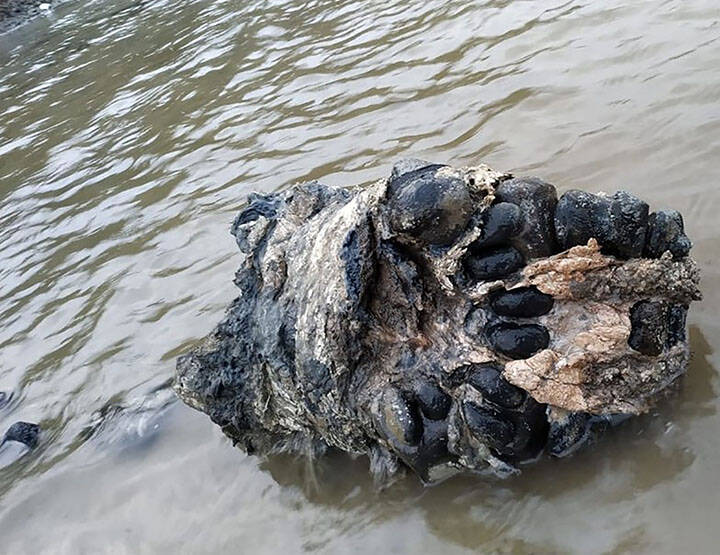
Stanislav Vanuit/TwitterThe skull of the mammoth found in Pechevalavato Lake.
Experts suspect that the mammoths in the ancient lake in Mexico died after they became trapped in the surrounding mud and it’s likely that early human hunters capitalized on their misfortune. It took six months for a team of researchers to dig out the remains and work on the site continues today.
The frozen tundra of the Siberian permafrost, however, has been famously known to produce unbelievably well-preserved specimens from prehistoric times. For instance, scientists were even able to analyze the DNA of a 28,000-year-old woolly mammoth specimen that was found incredibly well-preserved in the permafrost in 2011. The analysis showed that the DNA was still alive and active.
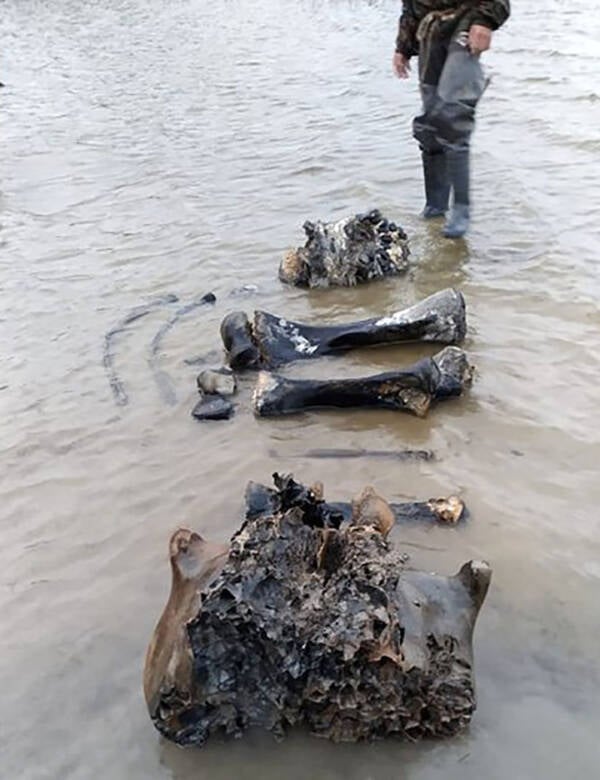
Stanislav Vanuit/TwitterResearchers hope to find more of the skeleton.
“Until now many studies have focused on analyzing fossil DNA and not whether they still function,” said study author Kei Miyamoto from the Department of Genetic Engineering at Kindai University. “This suggests that, despite the years that have passed, cell activity can still happen and parts of it can be recreated.”
That 2011 study has led to highly-publicized discussions about possibly cloning the woolly mammoth back to life from these active DNA strains. However, further studies on this continue.
Until then, we’ll just have to settle for the shock and awe of uncovering these prehistoric creatures little by little.
Next, learn about the controversial process of ‘de-extinction’ that could bring extinct species back to life on Earth. Then, read about the 18,000-year-old wolf-dog ancestor found perfectly intact in the Siberian permafrost.





